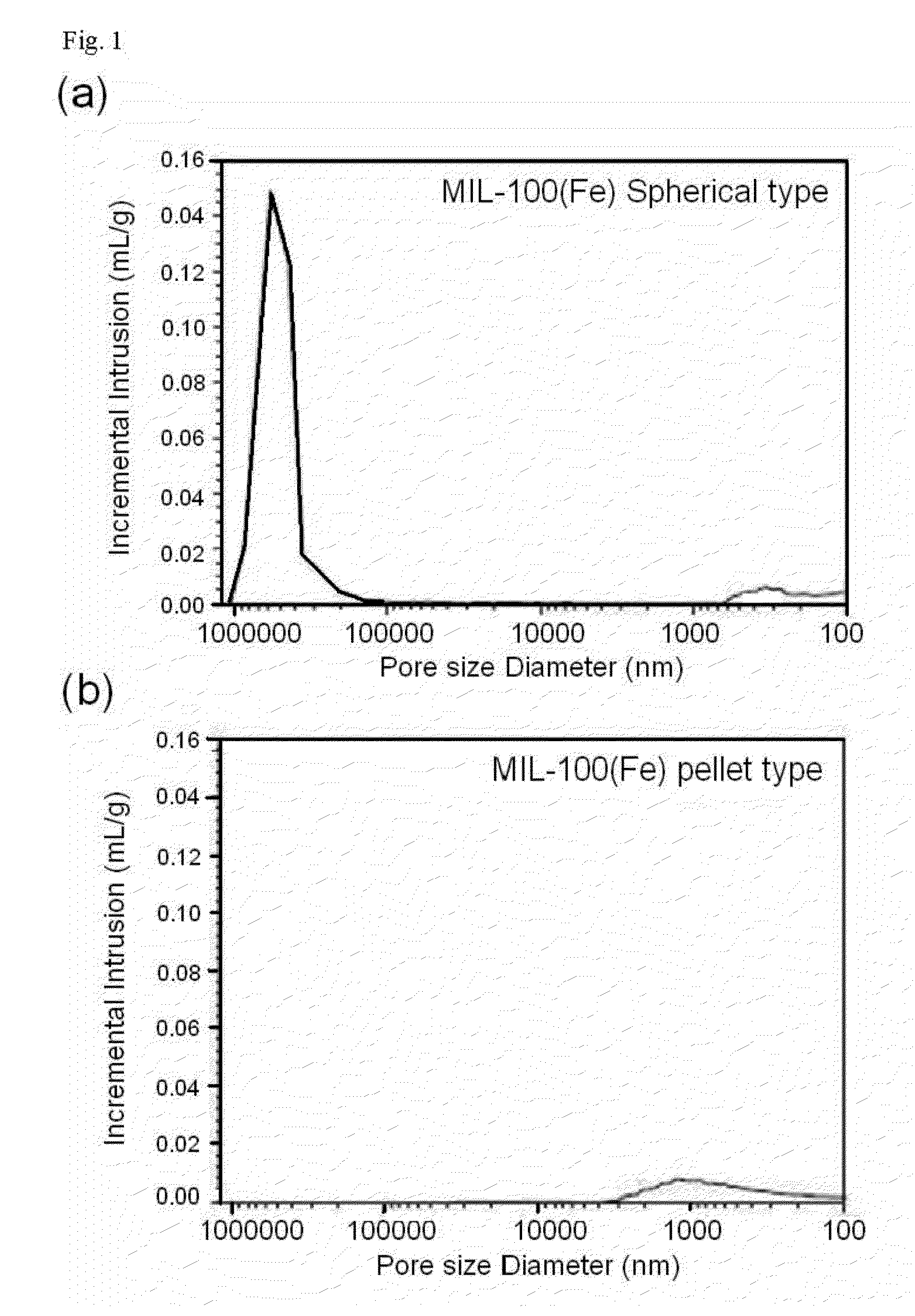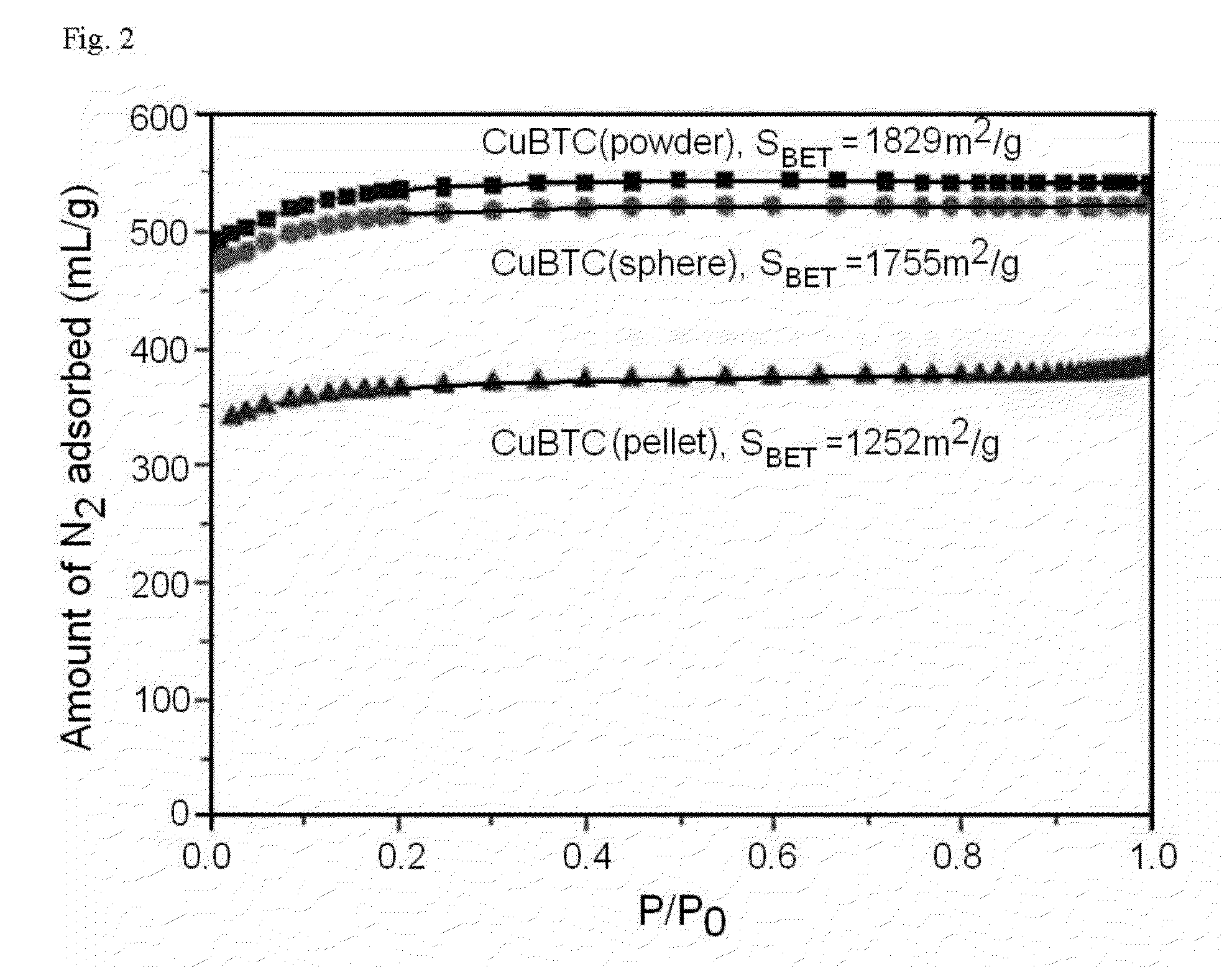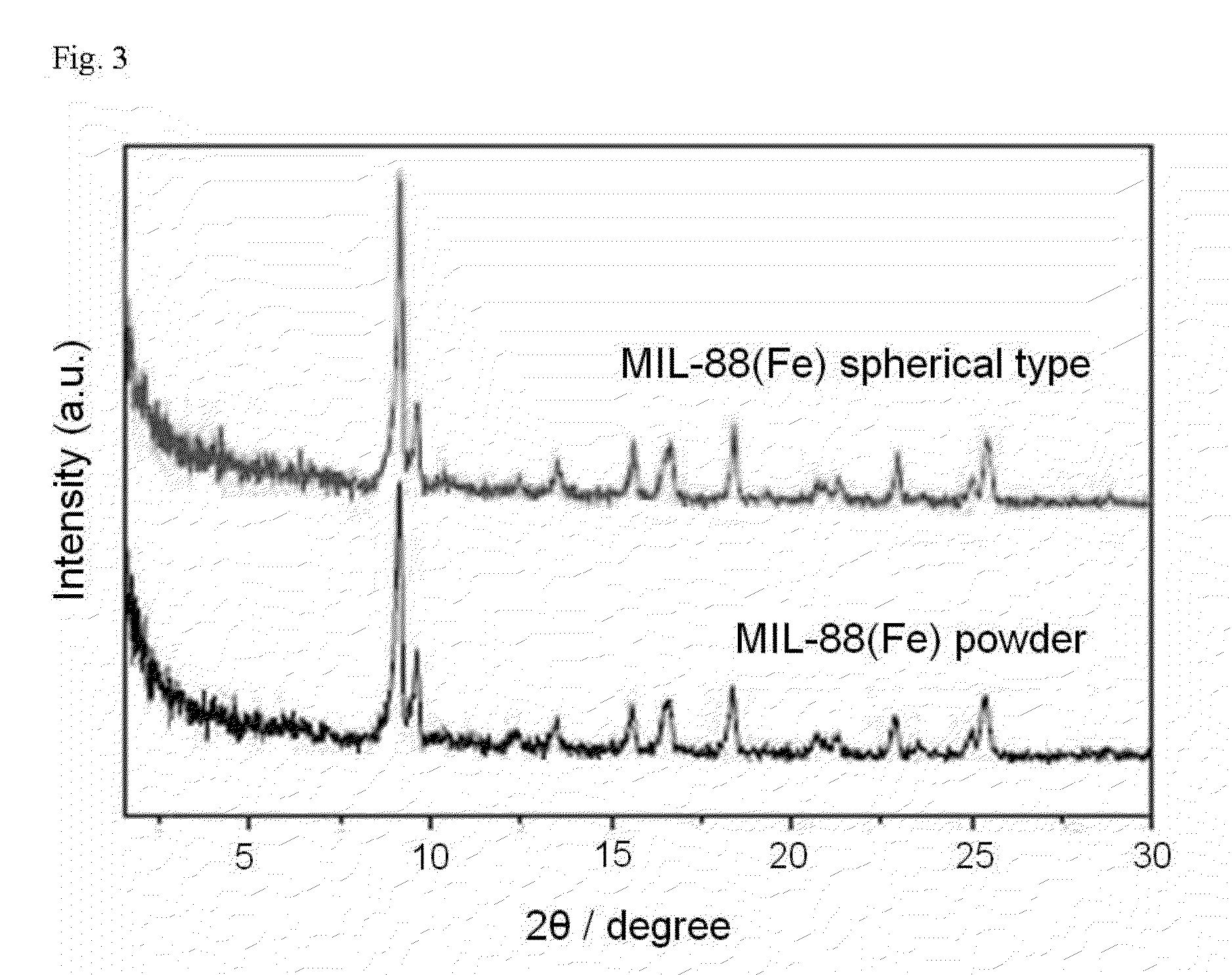Complex comprising crystalline hybrid nanoporous material powder
a technology of crystalline hybrid nanoporous material and complex, which is applied in the direction of organic compound/hydride/coordination complex catalyst, physical/chemical process catalyst, other chemical processes, etc., can solve the problems of easy deactivation and agglomeration, inconvenient application, and difficult recovery, so as to maintain the skeleton flexibility of nanoporous material, secure superior performance, and good
- Summary
- Abstract
- Description
- Claims
- Application Information
AI Technical Summary
Benefits of technology
Problems solved by technology
Method used
Image
Examples
preparation example 1
[0077]To a Teflon reactor, Cu(NO3)2.3H2O, 1,3,5-benzenetricarboxylic acid (BTC), and distilled water and ethanol as solvents were introduced so as to give a reactant mixture having a final molar ratio of Cu:BTC:ethanol:H2O=1:0.56:55.6:186. The resulting reactant mixture was pretreated for 5 minutes by the irradiation to an ultrasonic wave at room temperature to make the reactant mixture homogeneous to facilitate the formation of nuclei. The Teflon reactor containing the above pre-treated reactant mixture was mounted on a microwave reactor (Manufactured by CEM, Model Mars-5), which was irradiated to a microwave of 2.45 GHz for two minutes to elevate the temperature to 140° C. The reaction mixture was maintained at the temperature of 140° C. for 30 minutes to carry out the crystallization reaction, and then cooled to room temperature and filtered with a paper filter to obtain powder product. The obtained powder product was purified by washing one time or more with ethanol of 70° C. an...
preparation 2
[0079]To a Teflon reactor, 0.45 g of iron powder (Fe metal), 1.15 g of 1,3,5-benzenetricarboxylic acid (BTC), 2.4 ml of 5M HF and 4.8 ml of HNO3 were introduced to give a reactant mixture having a final molar ratio of Fe:BTC:HF:HNO3:H2O=1:0.67:2:0.6:309. The resulting reactant mixture was stirred at 500 rpm for 30 minutes at room temperature to make the reactant mixture homogeneous. The Teflon reactor containing the above pre-treated reactant mixture was maintained at the temperature of 160° C. for 8 hours to carry out the crystallization reaction and then cooled to room temperature, filtered, purified by washing once or more with distilled water of 80° C. and once with ethanol of 70° C., and dried at 100° C. to obtain a Fe-based hybrid nanoporous material, named as MIL-100(Fe).
[0080]It has been confirmed by the analysis of X-ray diffraction pattern that the obtained Fe-based hybrid nanoporous material has the same structure as that of MIL-100 reported in the literature [Chemical Co...
preparation example 3
[0081]To a Teflon reactor, 16.5 g of FeCl3, 5.6 g of 1,3,5-benzenetricarboxylic acid (BTC) and distilled water were introduced to give a reactant mixture having a final molar ratio of FeCl3:BTC:H2O=1:0.66:54. The resulting reactant mixture was stirred at 500 rpm for 20 minutes at room temperature to make the reactant mixture homogeneous.
[0082]The Teflon reactor containing the above pre-treated reactant mixture was maintained at the temperature of 160° C. for 8 hours to carry out the crystallization reaction. The resulting reaction mixture was then cooled to room temperature, filtered, purified by washing once or more with distilled water of 80° C. and once with ethanol of 60° C., and dried at 100° C. to obtain a Fe-based hybrid nanoporous material, named as MIL-100(Fe). In order to obtain high surface area, the product was further purified by contacting with aqueous ammonium fluoride (NH4F) solution (0.1M) at 70° C. for 1 hour or more.
[0083]It has been confirmed from the X-ray diffr...
PUM
| Property | Measurement | Unit |
|---|---|---|
| size | aaaaa | aaaaa |
| size | aaaaa | aaaaa |
| size | aaaaa | aaaaa |
Abstract
Description
Claims
Application Information
 Login to View More
Login to View More - R&D
- Intellectual Property
- Life Sciences
- Materials
- Tech Scout
- Unparalleled Data Quality
- Higher Quality Content
- 60% Fewer Hallucinations
Browse by: Latest US Patents, China's latest patents, Technical Efficacy Thesaurus, Application Domain, Technology Topic, Popular Technical Reports.
© 2025 PatSnap. All rights reserved.Legal|Privacy policy|Modern Slavery Act Transparency Statement|Sitemap|About US| Contact US: help@patsnap.com



